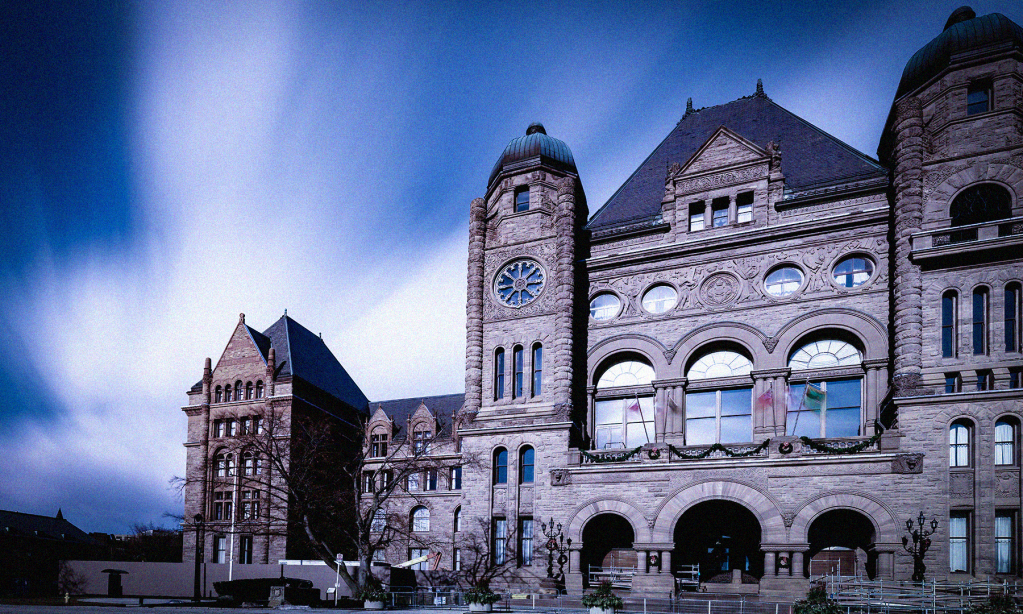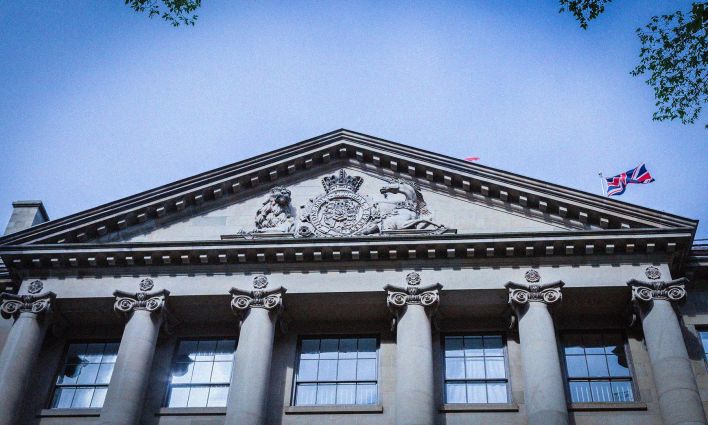When it comes to talking about public services and infrastructure spending, the current Ontario government likes to use a “shock and awe” approach.
The premier and his ministers love to toss out big numbers. They’re spending $190 billion on infrastructure. They’re building 3,000 hospital beds. They’re investing $1.4 billion into repairing schools.
These numbers are invariably offered up without context, and the typical busy Ontarian has no way to make sense of them. They just sound really, really big.
Shock and awe tactics were on full display on Sept. 19, when Treasury Board Chair Caroline Mulroney and Finance Minister Peter Bethlenfalvy released Ontario’s Public Accounts for the 2023-24 fiscal year, which ended March 31.
Overall program spending, the ministers announced, reached $195.2 billion in 2023-24, a 4.7 per cent increase over 2022-23.
That sounds like a sizable increase. But what the ministers failed to mention is that inflation in 2023-24 was up 3.2 per cent compared to 2022-23. They also failed to note that Ontario’s population was up 3.2 per cent as well. So while nominal spending in 2023-24 was up by 4.7 per cent overall, compared to the previous year it was actually down by 1.6 per cent, per person, with inflation and population growth taken into account. Surely not something to brag about.
Similar fun with numbers was on display in Minister Mulroney’s statement that “Our government is delivering on the most ambitious capital plan in the province’s history.” As the 2024 Ontario budget states, and Minister Bethlenfalvy repeated yesterday, the government’s plan is to spend $190 billion over the next 10 years.
Is this a big number? Not compared to the previous government’s plan. In the 2018 budget, the previous government planned to make “significant infrastructure investments of about $182 billion over the next 10 years.” Given that—thanks to high post-pandemic inflation—today’s dollars buy substantially less than 2018 dollars, the previous government’s plan was, in reality, more ambitious.
On fixing our schools, Minister Mulroney boasted about spending $1.4 billion in 2023-24 on repairs. Is this a big number? No. According to estimates by the non-partisan fixourschools.ca, the actual repair backlog is $16.8 billion, so $1.4 billion isn’t much. As far as building schools (not fixing them), the 2024 Ontario budget allocated $16 billion in capital grants over 10 years. As it turns out, that’s exactly what the previous government’s 2018 budget planned to spend—except for the obvious fact that, as noted, 2018 dollars were worth a lot more. So the current government is actually spending less.
It is true that, in 2023-24, provincial spending rose in some areas beyond what was needed to keep up to inflation and population growth. But here again, context is everything. In the health sector, for example (which includes long-term care), overall spending in 2023-24 was $85.5 billion, up by $7 billion compared to the previous year—roughly $2 billion more than needed to keep up to inflation and population growth (if not the increased health care needs of an aging population). But what Ministers Mulroney and Bethlenfalvy failed to mention in their news conference is that $1.8 billion of the increase was for retroactive pay for health care workers. If the government had not introduced Bill 124 (the Charter-violating 2019 law that kept public sector wage increases low), some or all of the $1.8 billion would have been paid out in past years. The sudden increase in 2023-24 would not have occurred.
What the ministers also failed to say on Thursday is that in the 2024-25 Ontario budget, health sector spending is set to be $85 billion—half a billion less than was spent last year!
Health care funding in Ontario is going down, not up.
If this all sounds confusing, it is. It’s meant to be. By lobbing large numbers into the public debate—numbers that reporters and voters may not have the time or background knowledge to dissect—the government creates a positive impression. It says, “We’re getting things done.” But in reality this fog of big numbers is a smokescreen designed to keep Ontarians from knowing what’s really happening.
In April, former Ontario Auditor General Bonnie Lysyk made a stunning statement about the Ontario budget: “It is impossible, even for a former auditor general, to decipher how taxpayer money is being spent relative to prior years on a detailed level.”
Let that sink in.
It doesn’t have to be this way. As Lysyk pointed out, the provincial budget in British Columbia provides actual details of spending plans and what they are supposed to accomplish. It can be done.
For the moment, though, Ontarians hoping to understand how provincial spending works are wise to be skeptical. This means asking questions. What did that number used to be? What happens when you take inflation into account? What happens when you take population growth into account? What do Ontarians actually need? Is this number big enough? Where does new spending come from? Is it paid for by cuts elsewhere, and if so, where are those cuts?
Finally, and maybe most importantly, Ontarians should look to their own experience to judge the government. Because if you can’t pay your rent, or you don’t have a family doctor, or you can’t get the help your child needs, big numbers don’t mean a thing.







